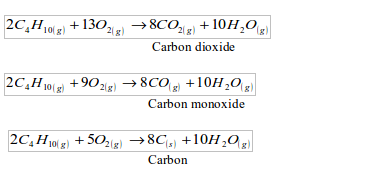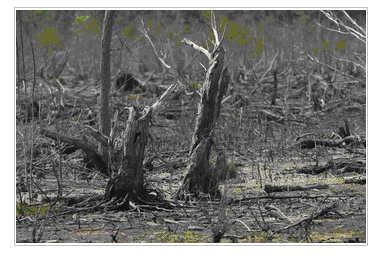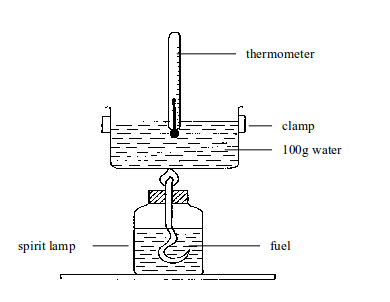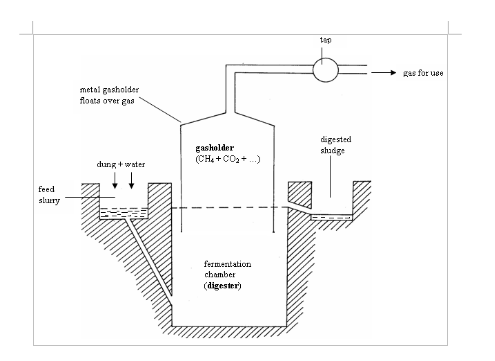FUELS AND ENERGY
Fuel is a very important substance for the existence of a modern man. Examples of fuels include petroleum products (petrol, diesel, fuel oil, kerosene, spirits, etc), natural gas, coal, wood, charcoal, producer gas, water gas, etc.
Different Sources of Fuels
These fuels are obtained from different sources as analyzed below:
Wood: wood is obtained from logs or poles of trees. The wood used as fuel in Tanzania is obtained from natural and artificial forests. Wood fuel is mainly used in rural areas where there are no alternative fuels. Wood is also a major source of fuel used by government institutions such as schools, colleges, hospitals, and military institutions.
Charcoal: This fuel is made by heating certain substances such as wood and bones in a limited supply of air. Wood charcoal is the main source of fuel in urban areas and in some townships.
Coal: coal used in Tanzania is mined at Kiwira coal mines. It is used indirectly for generating electricity or directly for powering machines in processing and manufacturing industries and factories. The electricity generated from coal is used in such industries as Tanga cement and several other industries in Dar es Salaam.
Natural gas: This gaseous fuel is mined at Songosongo in Kilwa (Lindi region), located in southern Tanzania. The gas is used as a fuel at homes and in small industries. It is also used to generate electricity that is used in various manufacturing and processing industries. The electricity generated from this gas is also sold to Tanzania Electricity Supply Company (TANESCO) who distributes the energy to its various clients.
Petroleum products (kerosene, diesel, petrol, fuel oil, fuel gas, etc.) These petroleum fractions are obtained from crude oil by the process of fractional distillation of crude oil (petroleum). Diesel, petrol and oil are used in vehicles and other machines. Kerosene is used in kerosene lamps and stoves for heating at homes and for other general purposes.
- Cut wood into small pieces.
- Arrange the wood pieces into a pile of wood on the ground.
- Cover the pieces of wood with soil, leaving one open space for setting fire.
- Set fire to the wood and then cover the open space with soil. Make sure that the wood is burning.
- After the wood is burned, uncover the soil and pull out the black solid substance underneath. This is the charcoal.
- The dead vegetation collects in the bottom of the swamp. It may start to decay. But decay soon stops, because the microbes that cause it need oxygen, and the oxygen dissolved in the stagnant, warm water is quickly depleted.
- The vegetation is buried under debris.
- Over hundreds of thousands of years, the environment changes. Seas flood the swamps. Heavy layers of sediment pile up on the dead vegetation, squeezing out gas and water and turning it into peat.
- As the peat is buried deeper, the increasing heat and pressure compress it progressively to form different types of coal.
- As the process continues, the coal gets harder and more compact. Its carbon content also increases, giving different types of coal. Table bellow shows a summary of the stages in the process:
| Name of coal | Carbon content | ||
| Peat | 60% | ||
| Pressure and Heat | Lignite | 70% | Hardness |
| Bituminous coal | 80% | ||
| Anthracite | 95% |
- Fuel naturally found in nature: -natural gas -methane from coal mine
- Fuel gas from solid fuels or materials: -gas derived from coal (water gas and producer gas) -gas derived from wastes and biomass (biogas)
- Fuel gas made from petroleum.





characteristics:
It should be environmentally friendly (not harm the environment) in the course of its production and use, that is, it should not produce harmful or toxic products such as much smoke, carbon dioxide, carbon monoxide, sulphur dioxides, etc, which pollutes the air.
It must be affordable to most people i.e. it must be cheap.
It should not emit or produce dangerous by-products such as poisonous fumes, vapour or gases.
It should have high calorific value i.e. it must burn easily and produce a tremendous quantity of heat energy per unit mass of the fuel.
It should be easy and safe to transport, store, handle and use.
It should be readily available in large quantities and easily accessible.
It should have high pyrometric burning effect (highest temperature that can be reached by a burning fuel). Normally gaseous fuels have the highest pyrometric effect as compared to liquid and solid fuels.
It should have a moderate velocity of combustion (the rate at which it burns) to ensure a steady and continuous supply of heat.
A good fuel should have an average ignition point (temperature to which the fuel must be heated before it starts burning). A low ignition point is not good because it makes the fuel catch fire easily, which is hazardous, while high ignition point makes it difficult to start a fire with the fuel.
A good fuel should have a low content of non-combustible material, which is left as ash or soot when the fuel burns. A high content of no-combustible material tends to lower the heat value of the fuel.
The heating value or calorific value of a substance, usually a fuel or food, is the amount of heat released during the combustion of a specific amount of it. The calorific value is a characteristic of each substance. It is measured in units of energy per unit of substance, usually mass, such as Kcal/Kg, J/g, KJ/Kg, KJ/Mol, MJ/m3, etc. Heating value is commonly determined by use of an instrument called bomb calorimeter.
| Solid and liquid fuels | Calorific value (MJ/kg) |
| Alcohols | |
| Ethanol | 30 |
| Methanol | 23 |
| Coal and coal products | |
| Anthracite (4% water) | 36 |
| Coal tar fuels | 36 – 41 |
| General purpose coal (5-10% water) | 32 – 42 |
| High volatile coking coals (4% water) | 35 |
| Low temperature coke (15% water) | 26 |
| Medium-volatile coking coal (1% water) | 37 |
| Steam coal (1% water) | 36 |
| Peat | |
| Peat (20% water) | 16 |
| Petroleum and petroleum products | |
| Diesel fuel | 46 |
| Gas oil | 46 |
| Heavy fuel oil | 43 |
| Kerosene | 47 |
| Light distillate | 48 |
| Light fuel oil | 44 |
| Medium fuel oil | 43 |
| Petrol | 44.80 – 46.9 |
| Wood | |
| Wood (15% water) | 16 |
| Gaseous fuels at 15ºC, 101.325 kPa, dry | Calorific value (MJ/m3) |
| Coal gas coke oven (debenzolized) | 20 |
| Coal gas low temperature | 34 |
| Commercial butane | 118 |
| Commercial propane | 94 |
| North sea gas, natural | 39 |
| Producer gas coal | 6 |
| Producer gas coke | 5 |
| Water gas carburetted | 19 |
| Water gas blue | 11 |

- Pour a measured volume of water into the tin. Since you know its volume you also know its mass (1 cm3 of water has a mass of 1g).
- Weigh the fuel and its container.
- Measure the temperature of the water.
- Light the fuel and let it burn for a few minutes.
- Measure the water temperature again, to find the increase.
- Reweigh the fuel and container to find how much fuel was burned.
| Ethanol (burned in a spirit lamp) | Butane (burned in a butane cigarette lighter) |
| Results | Results |
| Mass of ethanol used: 0.9g | Mass of butane: 0.32g |
| Mass of water used: 200g | Mass of water used: 200g |
| Temperature rise: 20ºC | Temperature rise: 12ºC |
| Calculations | Calculations |
| Heat given out = or 16.8KJ | Heat given out = = 10080J or10.08KJ |
| The formula mass of ethanol is 46. 0.9g gives out 16.8KJ of energy. So, 46g gives out of energy | The formula mass of butane is 58. 0.32 gives out 10.08KJ of energy. So, 58g gives out KJ of energy |
| So, H combustion for ethanol is -859KJ/mol | So, H combustion for butane is –1827 KJ/mol |
- Pour a known volume of water into a beaker.
- Measure the temperature of the water.
- Fill the spirit lamp with enough ethanol.
- Weight the mass of both the ethanol and the lamp.
- Light the lamp and let it continue burning for a few minutes before putting it off.
- Measure the water temperature again, to find the increase.
- Reweigh the ethanol and its container to find how much ethanol was burned.
- Mass of spirit lamp + ethanol (initially)
- Mass of spirit lamp + ethanol (finally)
- Mass of ethanol burned
- Final temperature of water
- Initial temperature of water
- Rise in temperature of water
- Mass of water


| Fuel | Heat of combustion in KJ/mol | |
| From the experiment | From a data book | |
| Ethanol | -859 | -1367 |
| Butane | -1827 | -2877 |
- Heat loss: Not all the heat from the burning fuel is transferred to the water. Some is lost to the air, and some to the container that holds the fuel.
- Incomplete combustion: In case of a complete combustion, all the carbon in a fuel is converted to carbon dioxide. But here combustion is incomplete. Some carbon is deposited as soot on the bottom of the lamp and some converted to carbon monoxide. For example, when butane burns, a mixture of all these reactions may take place:

Uses of Fuels
Generally, the uses of fuels include the following:
Source of mechanical power: Vehicles, machines and several other devices are powered by fuels such as diesel, petrol, oil, etc as a source of mechanical power. In some countries, vehicles have been modified to use natural gas as a source of power. In Tanzania for example, plans are underway to modify car fuel systems so that a natural gas obtained from Songosongo in Kilwa could power cars. This will help a great deal to reduce the cost of running cars on liquid fuels whose price in the world market is continuously escalating. Hydrogen may become an important fuel for cars and homes in the future, as we run out of oil and gas. It has two big advantages:
- Its reaction with oxygen produces just water. No pollution to the environment!
- It is a ‘renewable’ resource. It can be made by electrolysis of acidified water. As cheaper sources of electricity for electrolysis are developed, this may become an attractive option.
Cooking and heating: Fuels like wood, liquefied gas (propane or butane or a mixture of the two), charcoal and kerosene are burned to provide energy for cooking and heating. When burned, these substances provide enough heat to cook food and even heat different substance at home. Inhabitants of cold countries in temperate regions of the world burn different kinds of fuels to produce heat for heating homes and water.
Generation of electricity: The machines and devices responsible for electricity production and supply are fuelled by heavy liquid fuels such as diesel, fuel oil, etc. Most generators use liquid fuels such as petrol and diesel to generate electricity. So, fuels play an important role in electricity production. In Tanzania, coal from Kiwira mines is used for generation of electricity used in Tanga Cement Factory and some industries in Dar es Salaam. This is why escalation of crude oil in the world market results to increased cost of electricity supplied to homes and industries. In developed countries, uranium is used as a fuel to generate electricity which is used at homes and in industries.
Industrial uses: Industrial operations such as welding and metal fabrication make use of oxyacetylene flame which produces extremely high heat to melt and cut metals.
Other alternative uses: manufacture of different kinds of products such as petroleum jelly, nylon and plastic.

- prolonged drought spells and hence famine;
- drastic change in rainfall patterns;
- global warming and climate change;
- increased soil erosion and rapid depletion of soil nutrients;
- increased aridity and desertification;
- loss of valuable species of economic or medicinal value;
- broken food chain and reduced ecosystem stability;
- destruction of animal habitats and shelters;
- extinction of animal, microbial and plant species; and
- loss of biodiversity.
| KINETIC ENERGY | POTENTIAL ENERGY |
| Kinetic energy is energy in motion of waves, electrons, atoms, molecules, substances, and objects. | Potential energy is stored energy and the energy of position – gravitational energy. |
| Electrical energy is the movement of electrical charges. Everything is made of tiny particles called atoms. Atoms are made of even smaller particles called electrons, protons and neutrons. Applying a force can make some of the electrons move. Electrical charges moving through a wire is called electricity. Lightning is another example of electrical energy. | Chemical energy is energy stored in the bonds of atoms and molecules. This energy holds these particles together. Biomass, petroleum, natural gas, and propane are examples of stored chemical energy. |
| Radiant energy is electromagnetic energy that travels in transverse waves. Radiant energy includes visible light, x-rays, gamma rays and radio waves. Light is one type of radiant energy. Solar energy is an example of radiant energy. | Stored mechanical energy is energy stored in objects by the application of a force. Compressed springs and stretched rubber bands are examples of mechanical energy. |
| Thermal energy, or heat energy, is the internal energy in substances caused by the vibration and movement of the atoms and molecules within substances. Geothermal energy is an example of thermal energy. | Nuclear energy is energy stored in the nucleus of an atom – the energy that holds the nucleus together. The energy can be released when the nuclei are combined or when a nucleus splits apart (disintegrates). Nuclear power plants split the nuclei of uranium atoms in a process called fission. The sun combines the nuclei of hydrogen atoms in a process called fusion. Scientists are working creating fusion energy on earth, so that someday there might be fusion power plants. |
| Motion energy is the energy which enables movement of objects and substances from one place to another. Objects and substances move when a force is applied according to Newton’s laws of motion. Wind is an example of motion energy. | Gravitational energy is the energy of position or place. A rock resting at the top of a hill contains gravitational potential energy. Hydropower, such as water in reservoir behind a dam, is an example of gravitational potential energy. |
| Sound energy is the movement of energy through substances in longitudinal (compression/rarefaction) waves. Sound is produced when a force causes an object or substance to vibrate – the energy is transferred through the substance in a wave |
- Battery chemical to electrical, sound or light;
- Car engine chemical to mechanical and then kinetic;
- Light bulb electrical to light and heat;
- Parachutist potential to kinetic;
- Solar heat to electrical and kinetic;
- Wind mill kinetic to electrical;
- Running water kinetic to electrical;
- Muscles chemical to kinetic, etc.

The Use of Biogas in Environmental Conservation
These are some of the reasons:
Biogas does not produce much smoke or ash, which could otherwise pollute the atmosphere or land. When the gas is burned it produces very little smoke and no ash as compared to other sources of fuel such as wood.
The use of biogas for cooking and heating prevents the cutting down of trees to harvest firewood, or burn charcoal for fuel, a practice that could result to soil erosion, drought, etc. Hence, using the biogas as fuel helps to conserve the environment as no more cutting of trees may be done.
Using cow dung, poultry manure and other excreta for biogas production helps keep the environment clean because these materials are put into alternative use instead of just being dumped on land, a fact that could lead to pollution of the environment.
Some biomass employed in biogas production is toxic and harmful. By letting these materials be digested by bacteria, they may be turned into non-toxic materials that are harmless to humans, plants, animals and soil.
The excreta used for production of biogas produce foul smell if not properly disposed of. Using this excrete to generate biogas means no more bad smell in air.
Health hazards are associated with the use of sludge from untreated human excreta as fertilizer. In general, a digestion time of 14 days at 35ºC is effective in killing the enteric bacterial pathogens and the enteric group of viruses. In this context, therefore, biogas production would provide a public health benefit beyond that of any other treatment in managing the rural health and environment of developing countries.























Leave a Reply